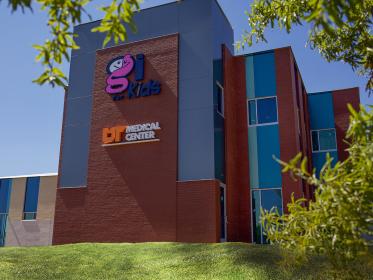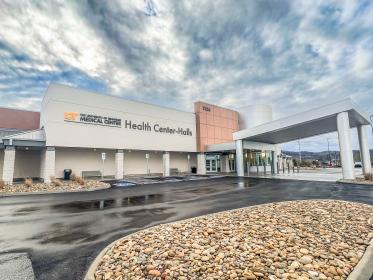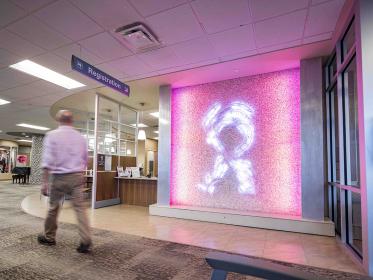Overview
A mammogram is a common test to screen for breast cancer. Regular mammograms are an important part of early diagnosis and treatment. Women who are 20 years and older should have a breast exam in the doctor’s office at least every three years. If you’re 40 years or older, the American Cancer Society recommends that you get a mammogram every year.
One out of every eight women in the United States will develop breast cancer sometime in her lifetime. Early detection and treatment increase the chances of a patient being cured. In addition to a breast self-exam, a mammogram is one way for a woman to detect breast cancer in the early stage.
What Is A Mammogram?
A mammogram is a specific type of breast exam used to aid in the early detection and diagnosis of breast diseases in women. Mammograms are X-rays of breast tissue. They are used for early detection of breast cancer and diagnosis of other breast conditions. They can detect a cancerous lump when it is the size of a pinhead, about two years before it can be felt. Screening mammograms are performed to check healthy women for signs of breast cancer. Patients with a breast problem or disorder are evaluated by a diagnostic mammogram. Diagnostic mammograms are ordered by a primary care provider to evaluate a woman who has symptoms of a breast disease such as a lump, nipple discharge, breast pain, dimpling of the skin on the breast, or retraction of the nipple. At the University Breast Center, all our technologists have specialized certification in mammography. A patient with an abnormal mammogram or lump is evaluated within two days by a physician specializing in breast cancer diagnosis and treatment.
Why Are Mammograms Important?
Annual mammograms can detect cancer early, when it is most treatable. In fact, mammograms show changes in the breast up to two years before a patient or physician can feel them. Mammograms can also prevent the need for extensive treatment for advanced cancers, and improve chances of breast conservation. Current guidelines from the American College of Radiology, the American Cancer Society, and the Society for Breast Imaging recommend women get annual mammograms starting at 40, even if they have no symptoms or family history of breast cancer.
What about Tomosynthesis?
Breast tomosynthesis, or a 3D mammogram, is a breakthrough in mammography that provides a clearer, more accurate view than digital mammography alone. Tomosynthesis provides a new dimension in breast cancer detection. It’s a special kind of mammogram that produces a 3-dimensional image of the breast by using several low dose x-rays at different angles. For tomosynthesis, the breast is positioned and compressed in the same way as for a mammogram, but the x-ray tube moves in a circular arc around the breast. It takes less than 10 seconds for the imaging. The information from the x-rays is sent to a computer, which produces a focused 3-D image of the breast. The x-ray dose for a tomosynthesis image is similar to that of a regular mammogram.
Research on breast tomosynthesis in large populations consistently shows:
- Improved breast cancer detection rates, especially invasive cancers
- A decrease in callbacks, which may lessen anxiety for patients
Conventional digital mammography produces one image of overlapping tissue, making it difficult to detect cancers. Breast tomosynthesis, performed with digital mammography using the same scanner, takes multiple images of the entire breast. It allows our specialized breast radiologists to see through layers of tissue and examine areas of concern from all angles.
Benefits
- Earlier detection of small breast cancers that may be hidden during digital mammography
- Greater accuracy in pinpointing size, shape and location of abnormalities
- Fewer unnecessary biopsies or additional tests
- Greater likelihood of detecting multiple breast tumors, which occur in 15 percemt of breast cancer patients
- Greater accuracy with dense breast
Click here to read the American College of Radiology’s position statement on breast tomosynthesis.
When Should I Get a Screening Mammogram?
Mammograms are recommended for many reasons. The University of Tennessee Medical Center recommends annual breast imaging for women over 40. Experts at the American Cancer Society, American College of Radiology, and Society of Breast Imaging recommend that women receive annual mammograms starting at 40. By not getting annual mammograms, you increase your chances of dying from breast cancer and the likelihood that you will experience more extensive treatment for any cancers found.
Some women may qualify for imaging at an earlier age depending on risk factors such as family history, genetic status, and physical findings. Mammography screening should be combined with monthly self-exams and regular examinations by your healthcare provider.
Screening Mammogram Guidelines
Ages 20 – 30
- Monthly self-examination
- Physical examination by a health professional every three years
Ages 35 – 40
- Monthly self-examination
- Annual breast examination by a health professional
- Baseline mammogram
Ages 40 +
- Monthly self-examination
- Annual examination by a health professional
- Mammogram every year
To Request a Screening or Diagnostic Mammogram, call University Breast Care Service at 865-305-9069.




